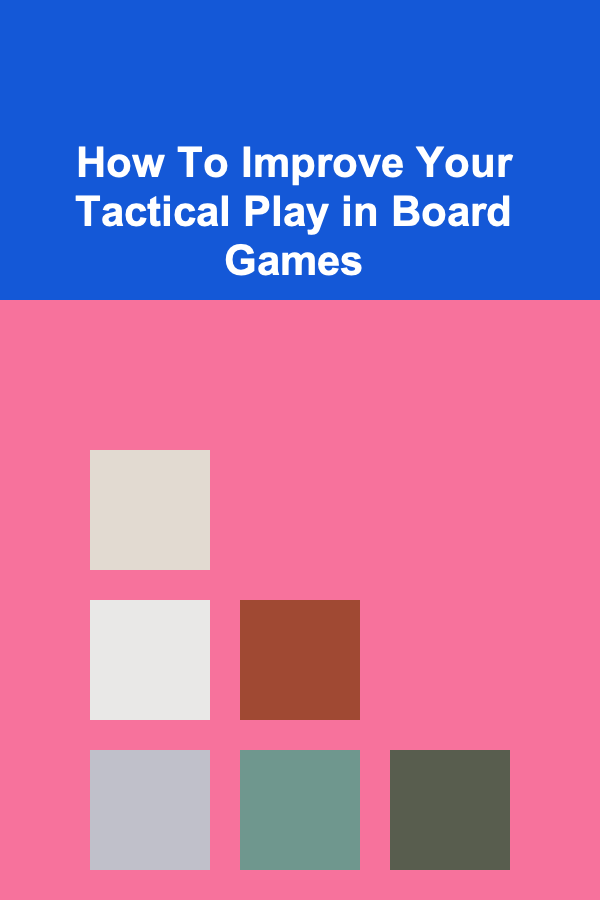
How to Build a Home Climbing Training Board
ebook include PDF & Audio bundle (Micro Guide)
$12.99$5.99
Limited Time Offer! Order within the next:
Not available at this time

Climbing is a physically demanding sport that requires strength, technique, and strategy. One of the most effective ways to improve as a climber is by incorporating training into your routine, and building a home climbing training board can provide you with the perfect tool to enhance your climbing skills. Whether you're training for sport climbing, bouldering, or just looking to stay fit, a custom climbing board can offer the convenience of practicing at home.
In this article, we'll walk you through how to build your own climbing training board, covering the materials, tools, design considerations, and training principles to make your project both functional and rewarding. Whether you're an experienced climber or a novice, this guide will help you create a training tool that will take your climbing to the next level.
Why Build a Climbing Training Board at Home?
1. Convenience and Flexibility
A home climbing board allows you to train on your own schedule, without the need to drive to a gym or outdoor crag. With a training board, you can climb in the comfort of your home at any time, whether you have a few minutes or a couple of hours. This flexibility makes it easier to maintain a consistent training routine.
2. Customized for Your Needs
Building your own climbing board means you can tailor it to your specific needs and goals. Whether you're working on strength, endurance, or technique, you can design your board with a variety of holds, angles, and features to match your training goals. This customization will help you focus on the areas you need to improve.
3. Cost-Effective Over Time
While the initial cost of building a climbing board may be significant, in the long run, it is much more affordable than paying for a climbing gym membership or frequent trips to an outdoor climbing area. With a training board at home, you can train whenever you like, without ongoing costs.
4. Accessibility
Not everyone has access to a nearby climbing gym or outdoor climbing areas. A home training board provides an accessible way to train year-round, regardless of weather or location constraints. If you're in an area with limited climbing resources, a home training board can be an excellent solution.
Essential Materials and Tools
1. Materials for the Frame and Structure
To build a solid climbing training board, you'll need durable materials for the frame and structure. The board should be able to withstand the physical forces applied during training. Below are some essential materials:
- Plywood: A standard material for climbing boards, plywood provides the base of the board. It's strong, lightweight, and easy to work with. Typically, 18mm (3/4 inch) plywood is sufficient for a sturdy, durable climbing wall.
- 2x4 Lumber: This will be used to create the framework for your board. The lumber acts as the structural support for the plywood.
- Wood Screws and Nails: To fasten the plywood to the frame and ensure everything stays secure.
- Holds: These are the climbing features you'll use to practice your grips. Holds come in many shapes and sizes, including crimps, slopers, pinches, jugs, and slats. You can buy these pre-made or create your own using resin or wood.
- Wooden Dowels or Bolts: For creating specific holds or attaching certain features, like hangboards or pinches.
- Foam Padding or Crash Pads: For safety, ensure you have some form of padding at the base of your training board. A thick gym mat or foam crash pads will cushion any falls.
2. Tools for Construction
- Circular Saw: For cutting plywood and lumber to size.
- Drill: Essential for drilling holes in the plywood for the holds and assembling the frame.
- Screwdriver: To drive screws into the wood securely.
- Measuring Tape and Square: To ensure accurate cuts and measurements for the frame.
- Sander: For smoothing out edges and ensuring that there are no sharp points that could injure you.
- Level: To make sure the structure is even and the wall is vertical or angled as intended.
Design Considerations
When designing your climbing training board, it's important to consider the following factors to ensure that the board is both functional and safe.
1. Wall Angles
One of the first decisions you'll need to make is the angle of the wall. There are several options here, depending on your training goals:
- Vertical Wall (0°): This is the most basic option and is suitable for beginner climbers or those looking to practice technique and footwork. It's also good for endurance training.
- Overhung Wall (30°--45°): This angle is great for building strength and power, as it forces you to use more muscle than technique. It's commonly used for bouldering training.
- Steep Overhang (>45°): This is ideal for advanced climbers looking to build upper body strength and explosive power. It will challenge your finger strength and force you to engage your core and arms more.
Consider your available space and the goals of your training when choosing the angle of your board.
2. Size and Dimensions
The size of your training board should fit your space and provide enough area for a variety of exercises. For most people, a board around 4 to 8 feet tall and 4 to 6 feet wide is sufficient for training. A larger board allows you to create more diverse routes and problems, but you'll need to ensure you have the space and support to install it safely.
3. Holds and Features
The holds on your climbing board are a crucial aspect of the training experience. They can vary in size, shape, and difficulty, and their placement will impact your training. Here are some ideas for creating a versatile and challenging board:
- Crimps: Small, sharp holds that help develop finger strength.
- Slopers: Larger, rounded holds that focus on open-hand strength and technique.
- Pinches: Great for strengthening grip and building thumb power.
- Jugs: Large, comfortable holds that allow you to rest and build endurance.
- Slats: Horizontal wooden slats that mimic natural features on outdoor boulders or crags.
- Hangboard: If you're looking to improve finger strength, consider adding a hangboard (a small, fixed structure with various grips) to your training wall.
Step-by-Step Guide to Building the Board
Now that you've gathered your materials and thought about the design, here's a step-by-step guide to building your climbing training board.
1. Build the Frame
Start by constructing the frame for your climbing wall using the 2x4 lumber. Cut the lumber to size based on the dimensions of your board, ensuring that you have a sturdy framework to support the plywood.
- Step 1: Cut the 2x4s to create the outer frame of the wall, making sure it matches the dimensions you've chosen for the training board.
- Step 2: Create internal support beams for additional strength, especially if you're planning to create an overhung wall.
- Step 3: Use screws to assemble the frame securely, ensuring that everything is square and level.
2. Attach the Plywood
Once the frame is assembled, attach the plywood to the frame using wood screws or nails. Make sure the plywood is securely fastened and that there are no gaps.
- Step 1: Position the plywood against the frame, ensuring it is aligned correctly.
- Step 2: Use screws to fasten the plywood to the frame at regular intervals along the edges and in the center for added support.
- Step 3: If your design includes an overhang, you may need to create additional support structures to hold the angle of the plywood in place.
3. Drill Holes for Holds
Now comes the fun part---adding the holds! You'll need to plan the placement of the holds carefully to create a variety of routes. Drill holes in the plywood where you want to attach the holds.
- Step 1: Mark the spots for each hold, ensuring that the routes are varied in difficulty and positioning.
- Step 2: Drill pilot holes for each hold. The size of the hole will depend on the type of holds you're using (e.g., bolts, screws).
- Step 3: Attach the holds using screws, ensuring they are secure and stable.
4. Add Safety Features
Make sure to add padding or crash mats to the base of the climbing wall. This will protect you in case of a fall.
- Step 1: Measure the area where you'll be climbing and add foam padding or a gym mat to cover the floor.
- Step 2: Make sure the padding is thick enough to cushion any falls.
Training Tips for Using Your Board
Once your board is built and ready to go, it's time to start training. Here are some training tips to help you get the most out of your new home climbing board:
- Start with a Warm-Up: Always begin with a proper warm-up to prevent injuries. This can include light climbing, stretching, and mobility exercises.
- Vary Your Training: Mix up your climbing problems to target different areas of your body and climbing technique. Incorporate strength, endurance, and technique-focused problems.
- Track Your Progress: Keep a climbing journal to track the difficulty of the routes you've created and monitor improvements over time.
- Rest and Recovery: Allow your muscles time to recover after intense sessions. Incorporate rest days and consider using your training board for active recovery (e.g., easy problems, technique-focused training).
Conclusion
Building a home climbing training board is a rewarding project that can greatly enhance your climbing abilities. By customizing your board to meet your specific training needs, you'll have a versatile and effective tool for improving your strength, technique, and overall performance.
With careful planning, the right materials, and a bit of hands-on work, you can create a functional climbing wall that will help you progress as a climber, all from the comfort of your own home. Happy climbing!

How to Create a Clutter-Free Entryway with Space-Saving Solutions
Read More
How to Handle Tenant Requests for Property Upgrades
Read More
How to Keep Your Car's Air Fresh with Simple Solutions
Read More
How to Safeguard Your Home When You Have Kids and Pets
Read More
Understanding the Gut-Brain Axis: A Deep Dive into the Microbiome's Influence
Read More
How To Improve Your Tactical Play in Board Games
Read MoreOther Products

How to Create a Clutter-Free Entryway with Space-Saving Solutions
Read More
How to Handle Tenant Requests for Property Upgrades
Read More
How to Keep Your Car's Air Fresh with Simple Solutions
Read More
How to Safeguard Your Home When You Have Kids and Pets
Read More
Understanding the Gut-Brain Axis: A Deep Dive into the Microbiome's Influence
Read More